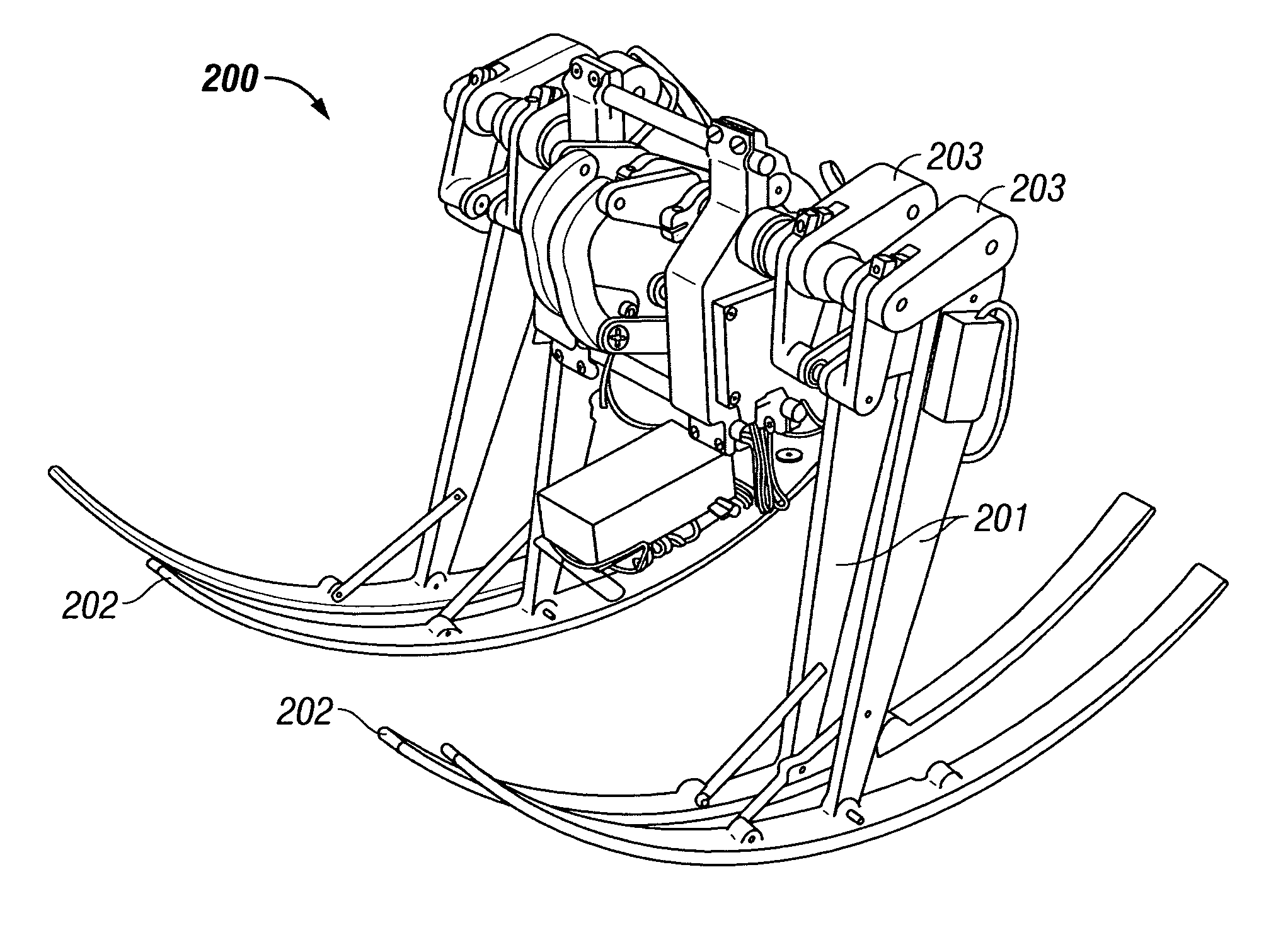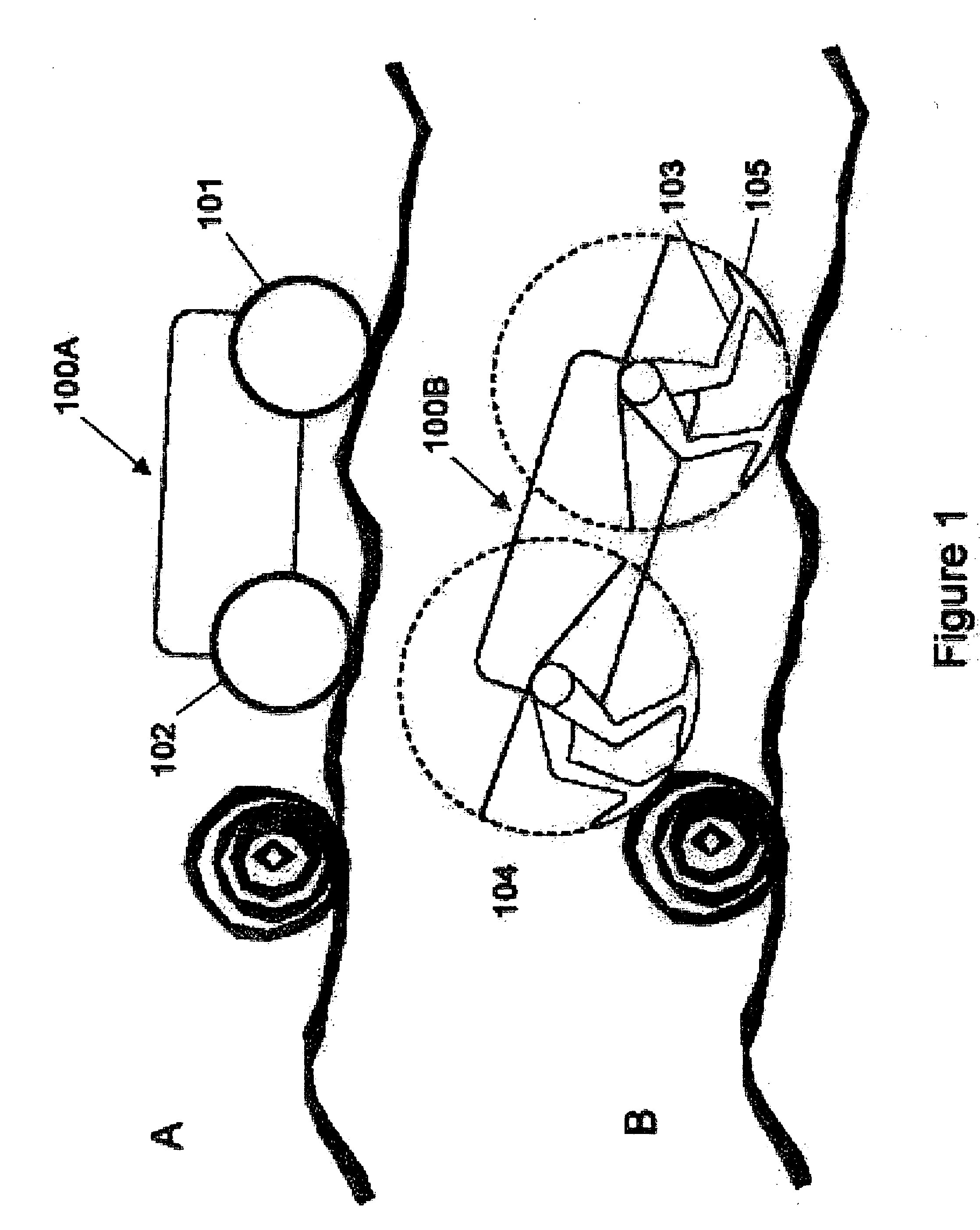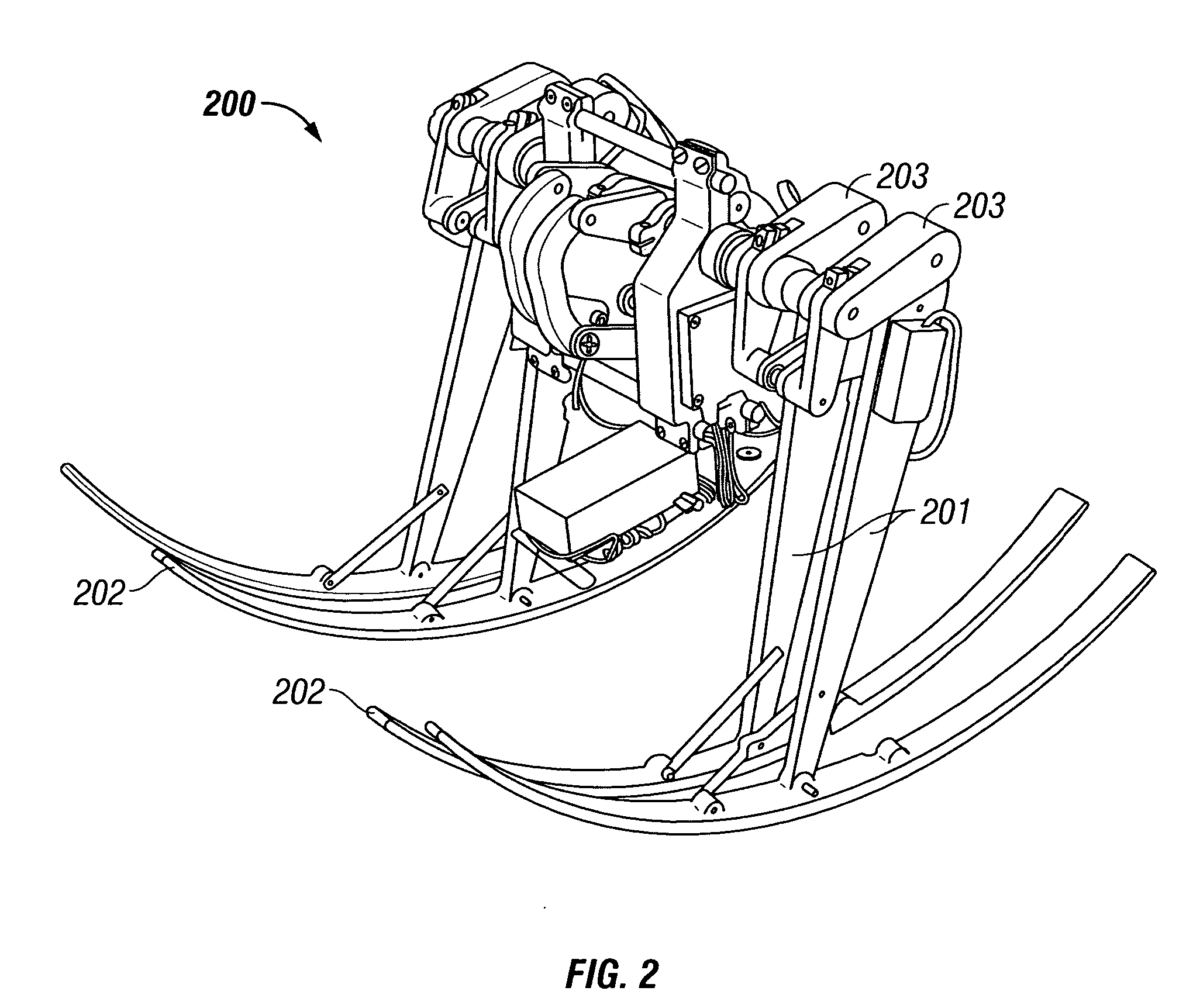Bimodal conveyance mechanism
a technology of bimodal and lateral motion, applied in the direction of vehicles, transportation and packaging, etc., can solve the problems of primarily due to mechanical energy consumption, two-legged devices are unstable, subject to rigorous analysis, etc., and achieve the effect of high weight, cost and mechanical
- Summary
- Abstract
- Description
- Claims
- Application Information
AI Technical Summary
Benefits of technology
Problems solved by technology
Method used
Image
Examples
Embodiment Construction
[0057] The wheel has enjoyed enduring success as a conveyance mechanism for land vehicles, and it has the advantage of at least a century of development of support systems. However, as shown in FIG. 1A, a wheeled vehicle 100a attempting to negotiate an obstacle in its path is readily stopped by the obstacle. Conventionally, the solution to this problem has been to provide vehicles with large-diameter wheels, which permit a vehicle to negotiate obstacles and large surface irregularities and to provide a high clearance between the axle and the ground. The wheel does provide the advantages of simplicity and efficiency. However, large wheels incur greater cost, possess greater weight, and require greater power from the vehicle. Moreover, maneuverability is significantly compromised, and the profile of the vehicle is increased.
[0058] As a solution to the disadvantages inherent to large-wheeled vehicles, the invention provides a virtual wheel that utilizes a leg pair. On the vehicle 100b...
PUM
 Login to View More
Login to View More Abstract
Description
Claims
Application Information
 Login to View More
Login to View More - R&D
- Intellectual Property
- Life Sciences
- Materials
- Tech Scout
- Unparalleled Data Quality
- Higher Quality Content
- 60% Fewer Hallucinations
Browse by: Latest US Patents, China's latest patents, Technical Efficacy Thesaurus, Application Domain, Technology Topic, Popular Technical Reports.
© 2025 PatSnap. All rights reserved.Legal|Privacy policy|Modern Slavery Act Transparency Statement|Sitemap|About US| Contact US: help@patsnap.com



